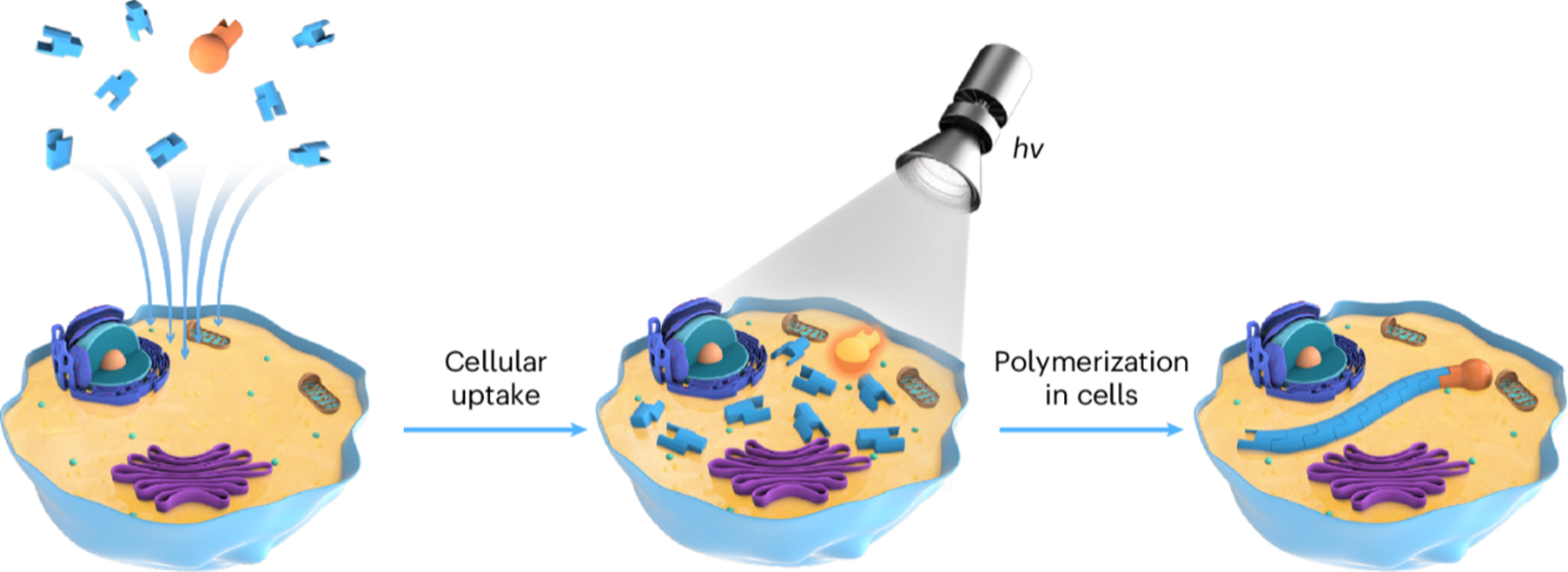
In Situ Formation of Functional Materials in Living Systems
Gold–polymer composites have attracted significant attention in materials science and nanotechnology, particularly for their potential in surface-enhanced Raman scattering. However, challenges such as nanoparticle toxicity, biocompatibility, and cellular uptake still need to be addressed.
Living systems show great potential for functional nanocomposite synthesis, with intracellular in situ methods offering eco-friendly, mild, and spatially controlled advantages over ex vivo approaches. Yet, a key challenge remains in harnessing cells as natural microreactors to guide the formation of complex nanostructures in vivo.
In a recent study published in Angewandte Chemie International Edition, Prof. GENG Jin and colleagues from the Shenzhen Institutes of Advanced Technology, Chinese Academy of Sciences, developed a novel strategy based on intracellular polymerization-induced self-assembly (iPISA). This approach enabled the in situ synthesis of gold–polymer nanocomposites within living Escherichia coli (E. coli), effectively transforming the bacteria into "living nanofactories".
In this study, the researchers designed a series of macromolecular chain transfer agents with varying structures and charge properties to initiate self-assembly through reversible addition-fragmentation chain transfer polymerization (RAFT) within living cells. Notably, they found that the charge of the resulting polymers significantly influenced their interactions with the cell membrane, as well as the localization of the final products—either inside the cells or on their surfaces.
The researchers further employed E. coli loaded with gold–polymer nanocomposites to carry out photocatalytic reactions. The results showed that the resulting "hybrid bacteria" could efficiently catalyze aldol condensation under mild conditions, yielding 2-ethylhexenal. Moreover, in photocatalytic dye degradation experiments using rhodamine B, the system exhibited excellent catalytic efficiency.
This study demonstrates the potential of living bacteria to construct and deploy functional nanomaterials directly within biological systems, paving the way for innovative applications in green chemistry, catalysis, sensing technologies, and biomanufacturing.

Schematic of Intracellular iPISA and Photocatalytic Activity. (Image by SIAT)
File Download:

